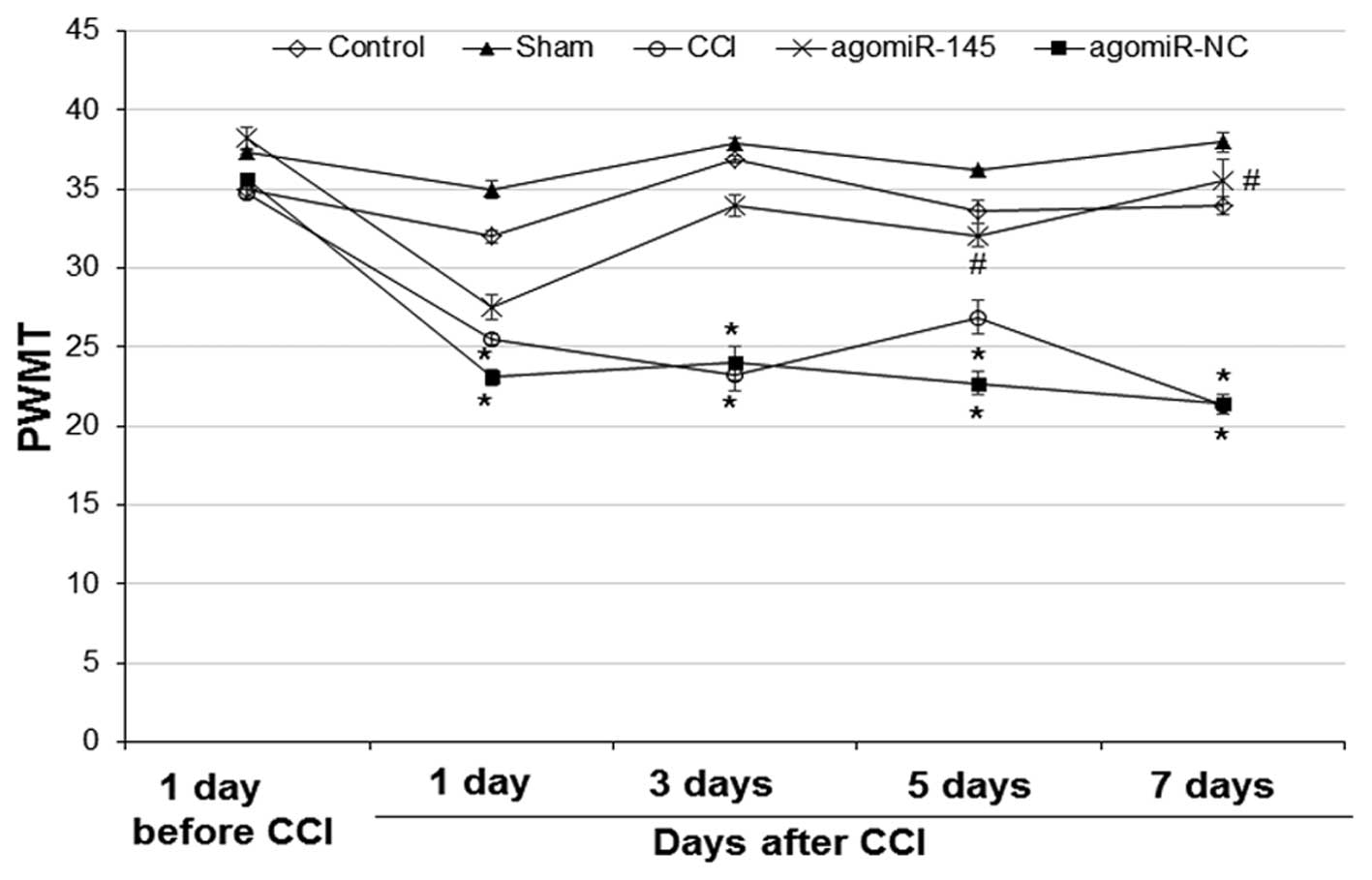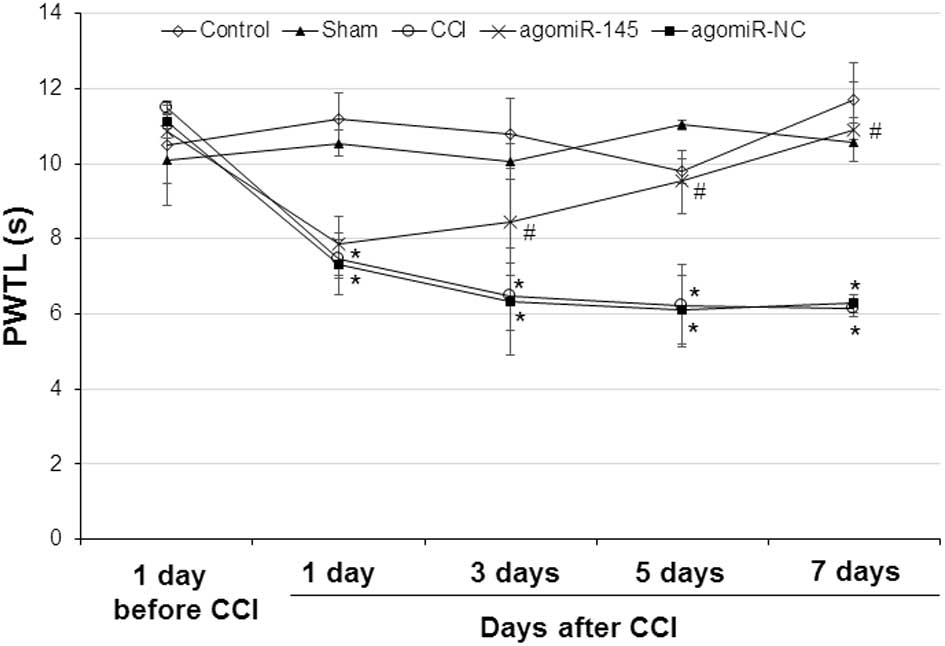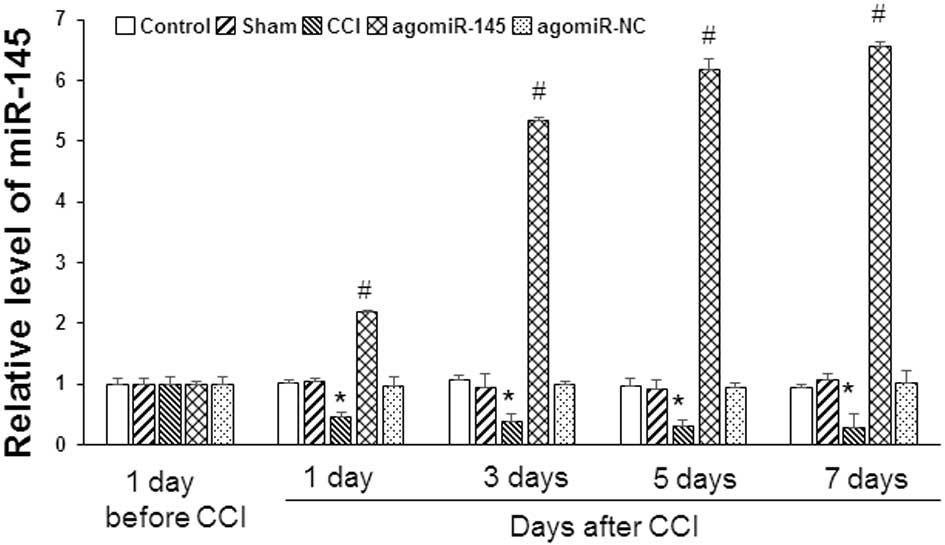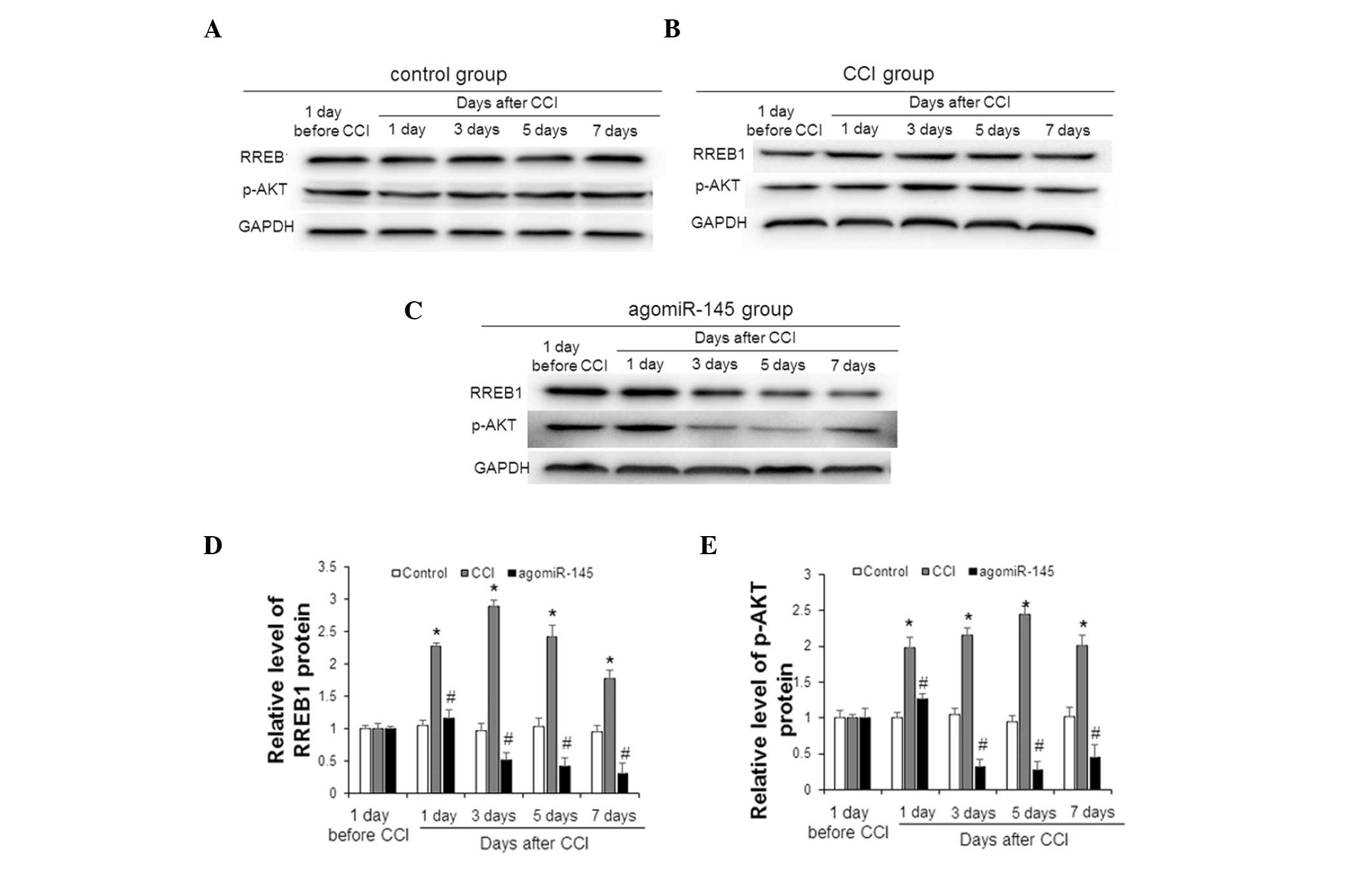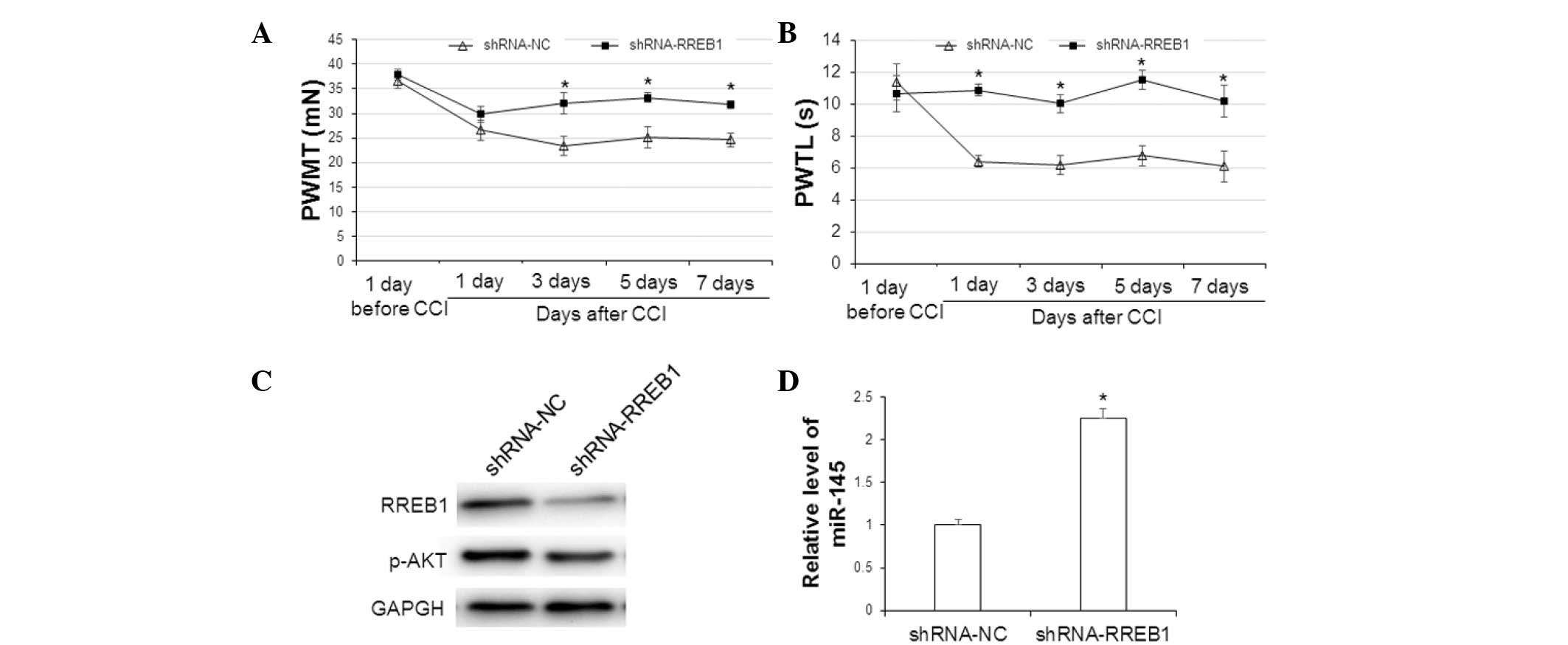|
1
|
Gilron I, Baron R and Jensen T:
Neuropathic pain: Principles of diagnosis and treatment. Mayo Clin
Proc. 90:532–545. 2015. View Article : Google Scholar : PubMed/NCBI
|
|
2
|
Fontaine D, Blond S, Mertens P and
Lanteri-Minet M: Neurosurgical treatment of chronic pain.
Neurochirurgie. 61:22–29. 2015. View Article : Google Scholar : PubMed/NCBI
|
|
3
|
Fallon MT, Storey DJ, Krishan A, Weir CJ,
Mitchell R, Fleetwood-Walker SM, Scott AC and Colvin LA: Cancer
treatment-related neuropathic pain: Proof of concept study with
menthol-a TRPM8 agonist. Support Care Cancer. 23:2769–2777. 2015.
View Article : Google Scholar : PubMed/NCBI
|
|
4
|
Helfert SM, Reimer M, Höper J and Baron R:
Individualized pharmacological treatment of neuropathic pain. Clin
Pharmacol Ther. 97:135–142. 2015. View
Article : Google Scholar : PubMed/NCBI
|
|
5
|
Rice AS and Smith MT: Angiotensin II type
2-receptor: New clinically validated target in the treatment of
neuropathic pain. Clin Pharmacol Ther. 97:128–130. 2015. View Article : Google Scholar : PubMed/NCBI
|
|
6
|
Jamali Z, Asl Aminabadi N, Attaran R,
Pournagiazar F, Oskouei S Ghertasi and Ahmadpour F: MicroRNAs as
prognostic molecular signatures in human head and neck squamous
cell carcinoma: A systematic review and meta-analysis. Oral Oncol.
51:321–331. 2015. View Article : Google Scholar : PubMed/NCBI
|
|
7
|
Bienertova-Vasku J, Novak J and Vasku A:
MicroRNAs in pulmonary arterial hypertension: Pathogenesis,
diagnosis and treatment. J Am Soc Hypertens. 9:221–234. 2015.
View Article : Google Scholar : PubMed/NCBI
|
|
8
|
Greco S, Gorospe M and Martelli F:
Noncoding RNA in age-related cardiovascular diseases. J Mol Cell
Cardiol. 83:142–155. 2015. View Article : Google Scholar : PubMed/NCBI
|
|
9
|
Saab BJ and Mansuy IM: Neuroepigenetics of
memory formation and impairment: The role of microRNAs.
Neuropharmacology. 80:61–69. 2014. View Article : Google Scholar : PubMed/NCBI
|
|
10
|
Akerblom M and Jakobsson J: MicroRNAs as
neuronal fate determinants. Neuroscientist. 20:235–242. 2013.
View Article : Google Scholar : PubMed/NCBI
|
|
11
|
Lutz BM, Bekker A and Tao YX: Noncoding
RNAs: New players in chronic pain. Anesthesiology. 121:409–417.
2014. View Article : Google Scholar : PubMed/NCBI
|
|
12
|
Guo X, Yu L, Chen M, Wu T, Peng X, Guo R
and Zhang B: miR-145 mediated the role of aspirin in resisting
VSMCs proliferation and anti-inflammation through CD40. J Transl
Med. 14:2112016. View Article : Google Scholar : PubMed/NCBI
|
|
13
|
O'Leary L, Sevinç K, Papazoglou IM, Tildy
B, Detillieux K, Halayko AJ, Chung KF and Perry MM: Airway smooth
muscle inflammation is regulated by microRNA-145 in COPD. FEBS
Lett. 590:1324–1334. 2016. View Article : Google Scholar : PubMed/NCBI
|
|
14
|
Lu A, Huang Z, Zhang C, Zhang X, Zhao J,
Zhang H, Zhang Q, Wu S and Yi X: Differential expression of
microRNAs in dorsal root ganglia after sciatic nerve injury. Neural
Regen Res. 9:1031–1040. 2014. View Article : Google Scholar : PubMed/NCBI
|
|
15
|
Norcini M, Sideris A, Hernandez LA Martin,
Zhang J, Blanck TJ and Recio-Pinto E: An approach to identify
microRNAs involved in neuropathic pain following a peripheral nerve
injury. Front Neurosci. 8:2662014. View Article : Google Scholar : PubMed/NCBI
|
|
16
|
Massi D, Cesinaro AM, Tomasini C, et al:
Atypical Spitzoid melanocytic tumors: a morphological, mutational,
and FISH analysis. J Am Acad Dermatol. 64:919–935. 2011. View Article : Google Scholar : PubMed/NCBI
|
|
17
|
Franklin RB, Zou J and Costello LC: The
cytotoxic role of RREB1, ZIP3 zinc transporter, and zinc in human
pancreatic adenocarcinoma. Cancer Biol Ther. 15:1431–1437. 2014.
View Article : Google Scholar : PubMed/NCBI
|
|
18
|
Hargreaves KM: Capsicum and local
anesthetic cocktails for trigeminal pain. Pain. 150:32010.
View Article : Google Scholar : PubMed/NCBI
|
|
19
|
Livak KJ and Schmittgen TD: Analysis of
relative gene expression data using real-time quantitative PCR and
the 2−ΔΔCt method. Methods. 25:402–408. 2001. View Article : Google Scholar : PubMed/NCBI
|
|
20
|
Gilron I, Baron R and Jensen T:
Neuropathic pain: Principles of diagnosis and treatment. Mayo Clin
Proc. 90:532–545. 2015. View Article : Google Scholar : PubMed/NCBI
|
|
21
|
Aksoy-Aksel A, Zampa F and Schratt G:
MicroRNAs and synaptic plasticity-a mutual relationship. Philos
Trans R Soc Lond B Biol Sci. 369:201305152014. View Article : Google Scholar : PubMed/NCBI
|
|
22
|
Zhang HY, Zheng SJ, Zhao JH, Zhao W, Zheng
LF, Zhao D, Li JM, Zhang XF, Chen ZB and Yi XN: MicroRNAs 144, 145,
and 214 are down-regulated in primary neurons responding to sciatic
nerve transection. Brain Res. 1383:62–70. 2011. View Article : Google Scholar : PubMed/NCBI
|
|
23
|
Kent OA, Fox-Talbot K and Halushka MK:
RREB1 repressed miR-143/145 modulates KRAS signaling through
downregulation of multiple targets. Oncogene. 32:2576–2585. 2013.
View Article : Google Scholar : PubMed/NCBI
|
|
24
|
Boufraqech M, Zhang L, Jain M, Patel D,
Ellis R, Xiong Y, He M, Nilubol N, Merino MJ and Kebebew E: miR-145
suppresses thyroid cancer growth and metastasis and targets AKT3.
Endocr Relat Cancer. 21:517–531. 2014. View Article : Google Scholar : PubMed/NCBI
|
|
25
|
Noguchi S, Yasui Y, Iwasaki J, Kumazaki M,
Yamada N, Naito S and Akao Y: Replacement treatment with
microRNA-143 and-145 induces synergistic inhibition of the growth
of human bladder cancer cells by regulating PI3K/Akt and MAPK
signaling pathways. Cancer Lett. 328:353–361. 2013. View Article : Google Scholar : PubMed/NCBI
|
|
26
|
Stein AT, Ufret-Vincenty CA, Hua L,
Santana LF and Gordon SE: Phosphoinositide 3-kinase binds to TRPV1
and mediates NGF-stimulated TRPV1 trafficking to the plasma
membrane. J Gen Physiol. 128:509–522. 2006. View Article : Google Scholar : PubMed/NCBI
|



